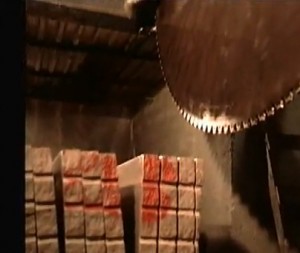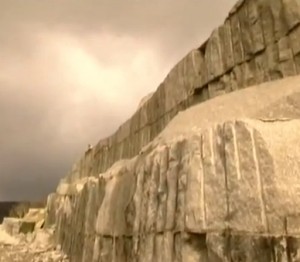How Granite Is Extracted and Processed Into Slabs For Countertops
Have you ever wondered where all those beautiful pieces of granite come from? How do the slabs get processed to look stunning on kitchen and bathroom counertops? Well, I found an excellent video that tells how granite is extracted and processed into shiny slabs.
Granite is one of the strongest stones on earth. It’s the darling of decor these days. As an indoor/outdoor building material, it’s timeless and resistant to acid rain.
Natures granite factory lies many miles below the earth’s surface. Boiling molten rock, called magma, builds up pressure from the intense heat and rises through cracks and crevices in the earth’s crust. As it rises, it slowly cools and solidifies into granite.
Most granite is buried under sedimentary rock which makes up most of the earth’s surface. The challenge is to extract as much granite from the quarry as possible-while losing as little as possible to damage during the extraction process.
Miners start by outlining a section of solid rock wall ninety nine feet long by twenty three feet wide. They use a gas flame to burn long narrow channels to free up the sides. Then, they drill holes twenty three feet deep along the back and bottom.
They feed explosive cables into the holes. Then, they set they explosion off. The explosion detaches the section. They use a combination of drills, steal pegs, plates and wedges to cut it down and cut it down further, until they have blocks measuring ten feet long by five feet wide, and five feet deep. This is a standard size that the granite factory can handle.
The blocks may be small, but each one weighs more than forty five thousand pounds.
At the factory, the first type of cut is called slabbing. They use this giant saw to cut slabs more than two inches thick. The blade’s metal segments contain diamond synthetic particles, which create the friction needed to make the cuts.
Water keeps the saw from overheating. It’s a slow process. The saw cuts less than twenty two square feet of granite per hour.
They use a gang saw to cut slabs thinner than two inches, to make kitchen countertops for example. This saw has steel blades, tense enough NOT to bend during the cutting and calibrated to cut as straight as possible. The gang saw cuts at a rate of about eighty six square feet per hour. It takes three entire days to cut through the rough block.
Once a granite slab is cut, it goes for polishing. This is the process that will bring out the beauty of the stone. This polishing line in the video has nineteen heads-each of which has six bricks that polish by abrasion, like sandpaper. The brick abrasions get smaller as you go down the line. The polishing line processes about ten square feet of granite per minute.
For a high gloss finish, the stone slab goes through all nineteen heads. For a semi gloss finish, the stone only passes through about ten heads.
For a rough finish, slabs skip the polishing line altogether and instead go through a process called flaming. With a stream of water to keep the slab from cracking under the intense heat, they run a propane flame at two thousand degrees fahrenheit across the surface. This intense heat makes the quartz inside the granite explode, creating a rough surface. They often use this technique for non-stick flooring.
After they finish, the last step is to cut the slabs to final specifications.
Granite is composed of various minerals. They’re interlocked like pieces in a jigsaw puzzle, giving the stone its trademark speckles and its remarkable strength.
This is an excellent video demonstrating how granite is extracted and processed. After watching it I’ve gained a new respect for the craftsmanship that is invested in fabricating kitchen and bathroom countertops out of granite.


